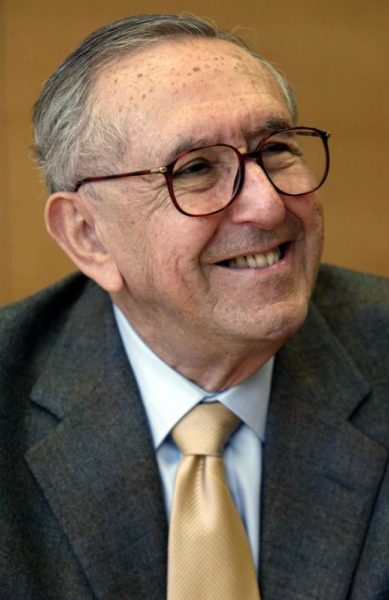This year marked the 30th anniversary of the Louvre Pyramid’s presence in the courtyard of the historic Paris museum. The arrival of I.M. Pei’s towering glass-and-steel structure incited many, who declared it a glaring modernist eyesore; others described its juxtaposition against a glorious Renaissance backdrop as ingenuity. It might have been controversial, but it was also incredibly impactful. For Pei, whose diverse projects included the Everson Museum of Art in Syracuse, New York, the Museum of Islamic Art in Doha, Qatar, and the Rock & Roll Hall of Fame in Cleveland, the Louvre Pyramid also symbolizes the late architect’s great versatility.
The Petronas Twin Towers, emblematic of the skyline in Kuala Lumpur, Malaysia, are the work that Argentine architect César Pelli is most closely associated with, and what’s astonishing is that they weren’t built until he was 71 years old. It may have taken Pelli a while to start his own practice (which he did at age 50), but his career prior was long and triumphant, marked by such milestones as working with Eero Saarinen on the TWA Flight Center at New York City’s John F. Kennedy International Airport, designing the Pacific Design Center in West Hollywood, California, and serving as dean at the Yale School of Architecture.
Michigan-bred Florence Schust met German immigrant Hans Knoll in 1941, when Knoll was in the throes of developing his nascent New York furniture business. She joined forces with him—five years later that relationship grew to include marriage as well— and Florence, who had studied architecture, created an ahead-of-its-time bespoke interior design arm for the business called the Planning Unit. Together, she and Hans made Knoll one of the most recognizable names in office design, enlivening drab corporate settings with sleek, modern furniture by the likes of Eero Saarinen, Marcel Breuer, and Ludwig Mies van der Rohe. After Hans passed away in 1955, Florence led Knoll, serving as its president for a decade.
Architect Ray Kappe.
Photo: Richard Hartog / Getty Images
Founding director of the progressive Southern California Institute of Architecture, Ray Kappe was an architect who had a profound influence on Los Angeles modernism. His houses embody sustainable, indoor-outdoor living, their walls of windows amplifying nature. His own home, the glass-and-redwood Kappe Residence in the L.A. neighborhood of Pacific Palisades, was built into a hillside. Completed in 1967, the artful glass-and-redwood dwelling is surrounded by trees and raised above natural springs.
Dion Neutra in Silver Lake, California.
PHoto: Wally Skalij / Getty Images
Dion Neutra began his career began by working with his father Richard Neutra—the Austrian immigrant and architect synonymous with Southern California modernism—on building light, airy structures that merged home and landscape. Eventually, upon his father’s death in 1970, Dion took over the Neutra Practice, handling such projects as the brutalist Huntington Beach Library. Dion was also an outspoken preservationist, fighting to keep Neutra buildings safe from demolition.
A one-time princess, actress, and Truman Capote muse, Lee Radziwill will always be remembered as the little sister of Jacqueline Kennedy Onassis. But she also transcended the socialite realm to find success spiffing up interiors, revamping rooms for the wealthy, and collaborating with Italian architect and designer Renzo Mongiardino. With her penchant for botanical motifs and rich silk-covered walls emboldened by patterns, Radziwill’s New York, Paris, London, and English countryside abodes often were profiled in glossy magazines.
